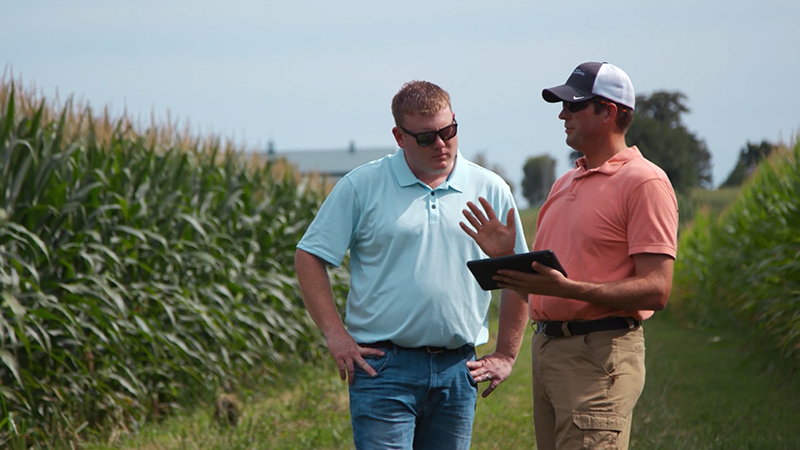Black Cutworms Moving North
Pioneer recommends early scouting to monitor any potential outbreaks.
Recent university reports show significant captures of black cutworms throughout the Corn Belt, and there are indications the pest is moving further north into Midwestern cornfields. Experts from Pioneer Hi-Bred, a DuPont business, recommend growers begin monitoring fields closely now for signs of black cutworms – ranging from small pinholes the pest may have left behind to the actual cutting of the corn stalk.
Recent wet conditions and southerly winds this spring have been conducive for black cutworms to move further into the Midwest," says Paula Davis, Pioneer senior manager for insect and disease traits. "Several Midwestern universities have reported significant black cutworm captures in Missouri, Illinois, Indiana, and Iowa."
Corn plants are the most susceptible from emergence to V5 stage. Once the plant emerges, begin scouting for black cutworm problems. Black cutworms will cut the plant, resulting in stand loss or irregular stands. "Following the first cutting, growers should continue to monitor their crop," says Davis. "The threat for black cutworms can last up to three weeks after the first cutting date."
Once black cutworms reach the fourth instar, approximately one-half inch long, they can cut the plant. Black cutworms also can create small shot holes in the leaves of corn plants. No-till fields or fields with annual or perennial weeds are at higher risk for black cutworms. Egg-laying females are attracted to these areas. Additionally, soybean stubble is more attractive than corn stalks.
The suggested threshold for considering an insecticide treatment has been lowered recently due to higher corn commodity prices. Consider using an insecticide treatment if 1 percent to 2 percent of plants are cut and larvae are present. For additional information on timing an insecticide treatment, retailers can contact Pioneer agronomist or other seed experts.
"At this point, grower concerns have been minimal in northern Iowa. This doesn’t mean a grower should quit monitoring. It is important to regularly monitor your corn crop," says Chris Doud, Pioneer Iowa agronomist. "Growers need to walk their fields, inspect their crop emergence, and take stand counts. If a grower suspects a problem, they should start by digging in the soil to look for cutworms. Black cutworms oftentimes can be found in the surrounding soil profile near corn plants during the day and are more prevalent feeders at night or on overcast days when temperatures are cooler."
Pioneer offers hybrids with Herculex I, the only Bt (Bacillus thuringiensis) trait that helps control western bean cutworm and black cutworm.






